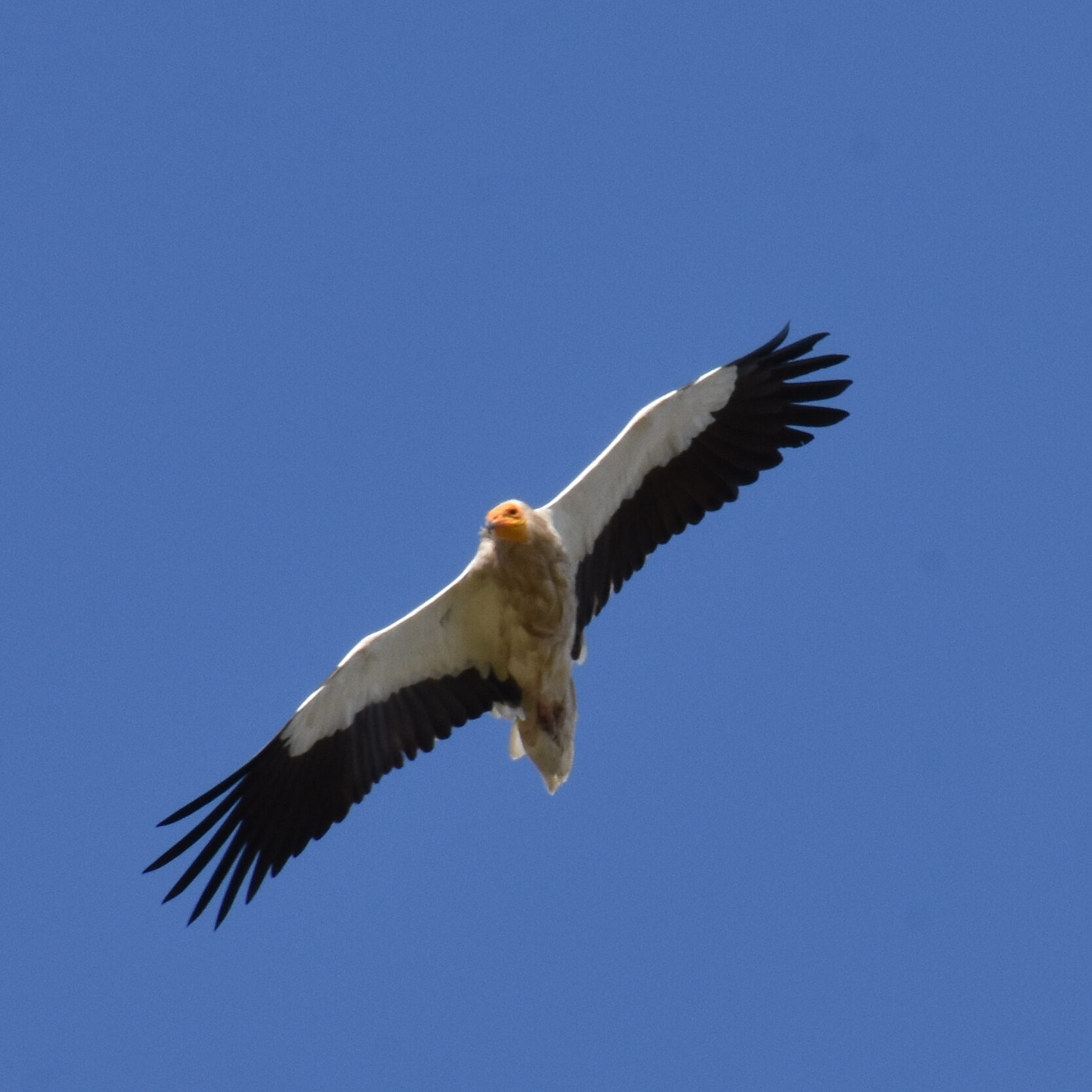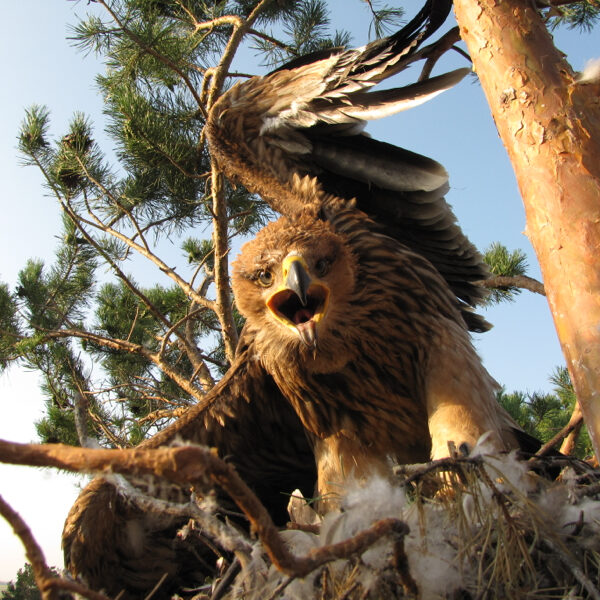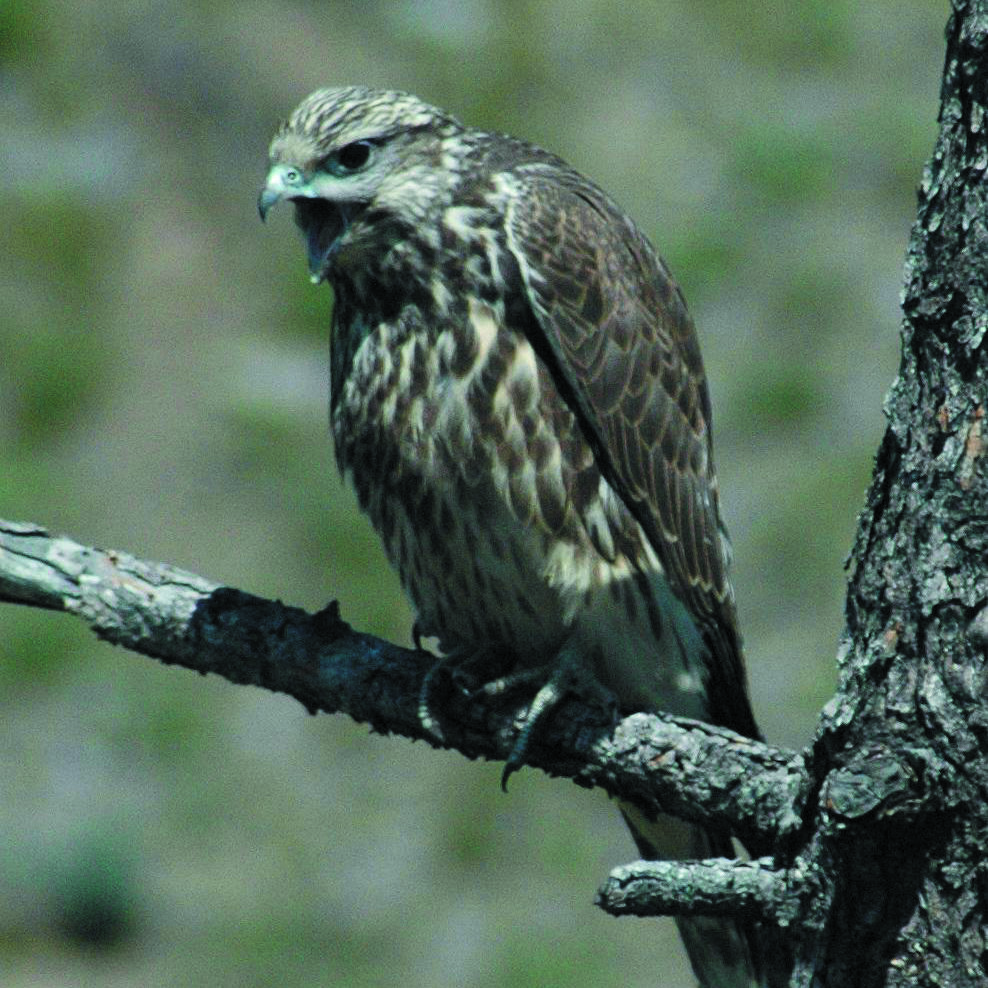Raptor Conservation
Predators found all around the globe (except Antarctica), raptors play integral roles in ecosystems, regulating prey species down the food chain just like large predatory mammals. Also like land-based predators, they are often indicator species, meaning that when their populations decline, it is a sign of serious problems in the entire ecosystem.
Of the 40 species of birds of prey living in Kazakhstan, 15 are listed in the Red Book of the Republic of Kazakhstan. (A country’s “red book” is similar to the IUCN’s global “Red List of Threatened Species,” but at a country-level scale).
A primary challenge in protecting raptor and other bird populations in the country is that we don’t know enough about avian biology, ecology, and especially migration. Without knowing the entire geography of a single bird’s or population group’s movements, it is hard to protect them effectively. Nesting sites may be rich in resources and well protected, but perhaps there are dangerous stopovers en route to their winter home, or their winter habitat lacks a prey base. The birds may also be vulnerable to a host of other threats.
Central Asia, including Kazakhstan, offers important nesting and migratory habitat for many species of raptors in Eurasia. Resources to ensure the protection of these birds, however, are limited. Consequently, many Central Asian countries are rapidly building bird-hazardous energy and linear infrastructure (windpower turbines, unsecured powerlines, etc.), communities are killing birds out of ignorance and retribution for livestock attacks, and smugglers pay poachers significant prices for captured raptors.
Several vast and important migration routes (flyways) run north-south through Kazakhstan, and the well-being of not only local nesting raptors, but also countless (millions) birds from Russia, Mongolia, and China depend on the ongoing health and safety of these areas.
Of the 40 species of birds of prey living in Kazakhstan, 15 are listed in the Red Book of the Republic of Kazakhstan. (A country’s “red book” is similar to the IUCN’s global “Red List of Threatened Species,” but at a country-level scale).
A primary challenge in protecting raptor and other bird populations in the country is that we don’t know enough about avian biology, ecology, and especially migration. Without knowing the entire geography of a single bird’s or population group’s movements, it is hard to protect them effectively. Nesting sites may be rich in resources and well protected, but perhaps there are dangerous stopovers en route to their winter home, or their winter habitat lacks a prey base. The birds may also be vulnerable to a host of other threats.
Central Asia, including Kazakhstan, offers important nesting and migratory habitat for many species of raptors in Eurasia. Resources to ensure the protection of these birds, however, are limited. Consequently, many Central Asian countries are rapidly building bird-hazardous energy and linear infrastructure (windpower turbines, unsecured powerlines, etc.), communities are killing birds out of ignorance and retribution for livestock attacks, and smugglers pay poachers significant prices for captured raptors.
Several vast and important migration routes (flyways) run north-south through Kazakhstan, and the well-being of not only local nesting raptors, but also countless (millions) birds from Russia, Mongolia, and China depend on the ongoing health and safety of these areas.
Golden Eagle
- under development







